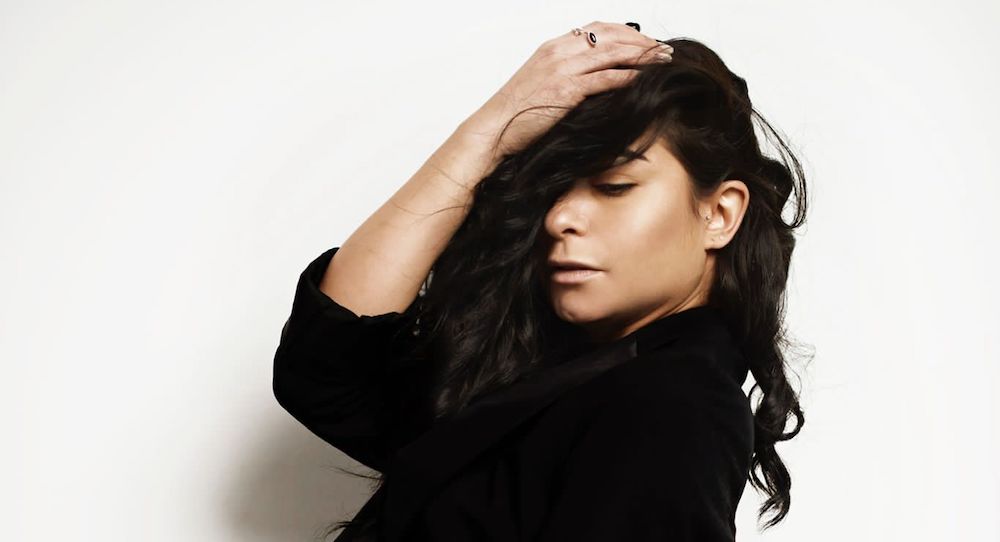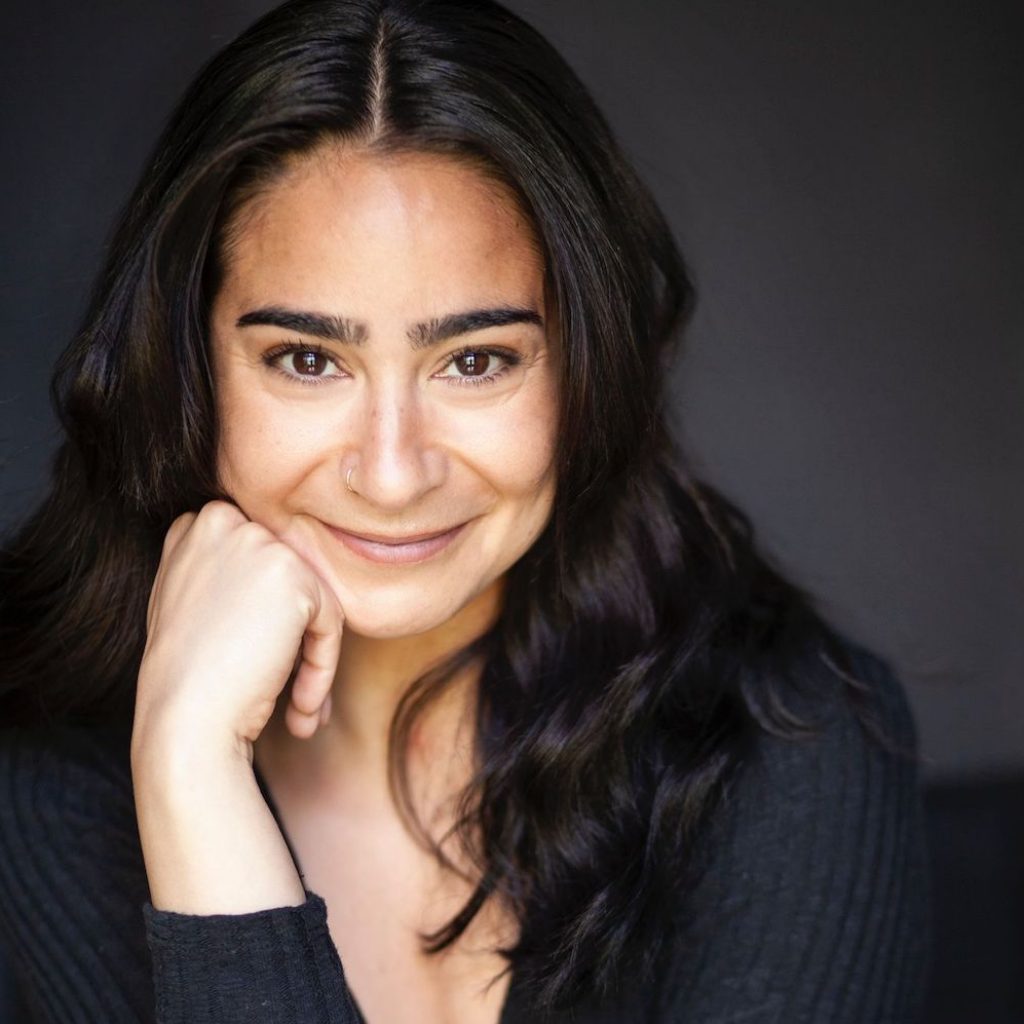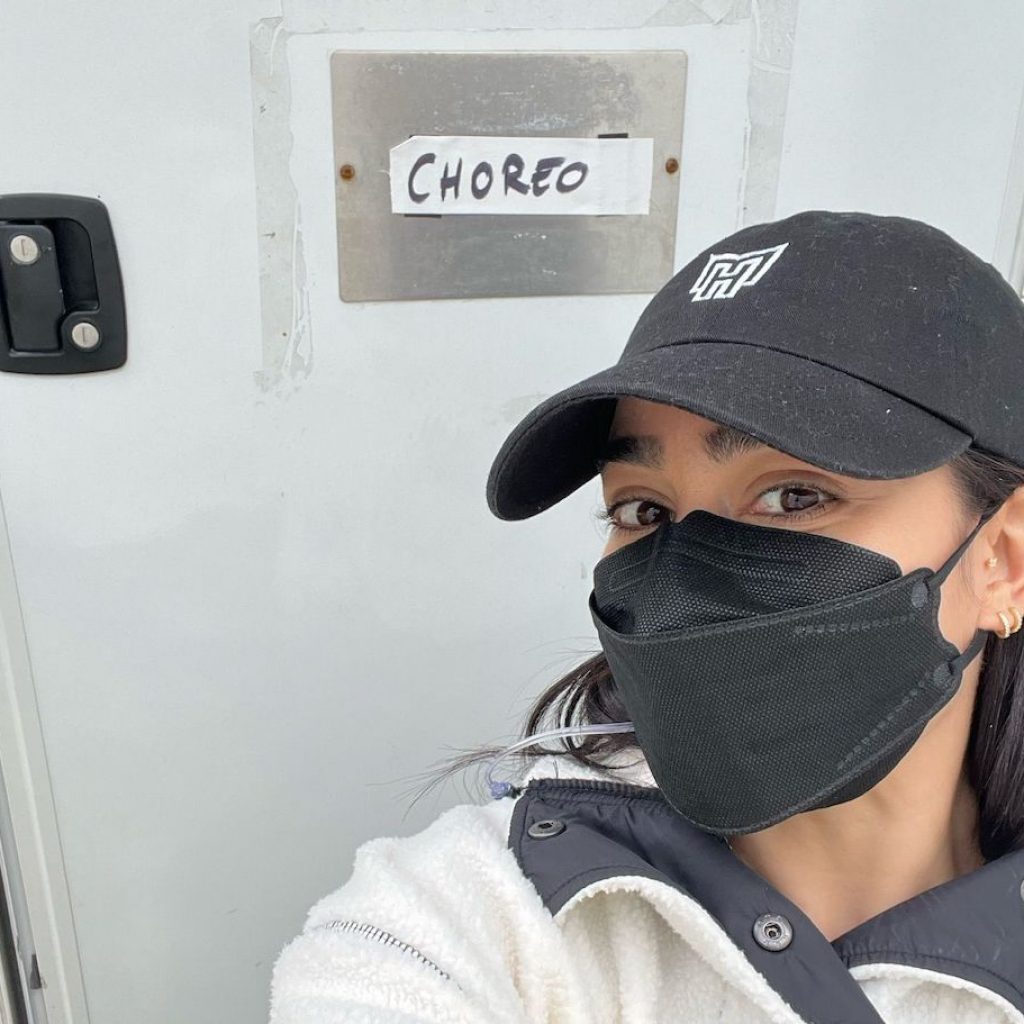Randa Barett describes herself as a dancer first – she loves performance, and has danced for cruise ships, live shows in L.A., and film and TV – but she felt a pull toward the creative process. When the opportunity to assist Riverdale’s choreographer Heather Laura Gray presented itself, Barett took it.
When Barett first auditioned for Riverdale as a dancer, she encountered an unexpected quirk: she looked too much like Camila Mendes (who plays Veronica) for casting to put her on camera. Gray “is one of my biggest supporters,” says Barett, who had worked closely with Gray on other projects. “I was confused when I would make it to the last round and then not get booked.” So Gray brought her onto skeleton crew instead, as a dance double for Veronica.
Skeleton dancers are who the choreographer workshops movement on before the performing dancers and actors come learn the steps. You don’t always go to camera, you’re not necessarily part of the end product. But you get to work closely with the choreographer, and tend to stay working with the them throughout the season.
“I remember when I manifested being in skeleton,” Barett reveals. “I didn’t want to just dance; I wanted to be there from the beginning. Film and television gigs are often only one day, or a week at most. It’s bittersweet.”
Riverdale was Barett’s first taste of being part of the creative process for TV. “It felt more involved. When Heather was with the other dancers, and as the main character, I would play with ideas and see if she liked them. I’ve known Heather for a long time, but I think the trust she built in me during skeleton is what gave her the idea to interview me for assistant choreographer.”
Barett remembers manifesting an assistant choreographer position, too. “There was a day in Riverdale rehearsals when the usual assistant choreographer wasn’t there.” With her second-in-command gone, Gray needed someone to step up in the meantime. No one put their hand up, so Barett seized the opportunity.
She remembers it all happening so fast – when asked to repeat the choreography, Barett had the steps and the timing, but didn’t replicate the counts. “Heather said, ‘Randa, I love you, but I need a counter,’ and I thought I blew my chance. But then I thought: I want to be in this industry, I want to be a choreographer. If I need to count, then from now on, I’m counting. I started teaching all my open classes, all my kids’ classes, with counts.”
It paid off. “In September 2021, I got the email from my agent saying Heather wanted to interview me for assistant choreographer,” she says. “It hadn’t even been a year since that event happened.” Barett had kept in touch with Gray, working for her in the interim on Riverdale and J Team, but thought her shot as assisting was over.
So what got Gray to give her a second chance? Gray later told her, “Your energy never shifted.” Barett took the correction, didn’t breakdown during the rest of rehearsal, didn’t fight an ego battle, and nothing was weird.
On top of being a smart dancer, being an assistant is also about connection, and having a good rapport with the choreographer. “Heather brought me on to assist with Monster High, and I got to see how much this world is for me,” Barett says. “Not just the creative side, but the admin stuff, too.”
Many don’t realize how intensively administrative assisting is. “I’m Type A, OCD, dance captain to the max,” Barett shares. “I never thought all my skills would come together in one job, creatively and organizationally.” Be prepared to sort hundreds of audition submissions and memorize 18 different tracks – that’s all in the job description.
Then the moment came where Barett booked her first full-fledged choreographer job. “It was a Lifetime movie, it was aerobics and pole, it was so up my alley.” The director and producer loved her, and they were ecstatic that she ticked every stylistic box and had the experience to back it up. “Thing is, it didn’t happen.”
While scheduling conflicts and production details prevented the gig from fully materializing, Barett felt confident in her ability to take on the role of choreographer. “The cool thing was that I got to go through my first process. I got headshots to select from. It’s proof to myself that I’m ready. I know it’s coming.”
Barett wasn’t even hurt that the gig didn’t happen. “I was so proud of how prepared I was. Right away, I knew to ask for the script, the floorplan, props. Heather had trained me so well I wasn’t even overwhelmed. Working as her assistant has been so valuable.”
She’s now taking what she’s learned from assisting in film and TV and turning it into a mentorship program for dancers. “It’s going to be a two-day program with about 15 people, so I can really focus on them. It’s not dancing, it’s everything else. It’s how to make demo reels, write emails and resumes, label audition files, branding, O1 visas, taxes.”
In the end, everyone’s path is different, and there’s no one trajectory to success. But having a) the tools on hand to prepare you for whatever opportunities come your way and b) stepping stone goals (like skeleton crew) that will lead you to your higher goal are both a great start. Of her own journey, Barett says, “I am so thankful to the choreographers who have paved the way for us to be able to expect assistants or a skeleton crew, and multiple rehearsals. Thank you for building that norm.”
If you’d like to keep following Randa Barett’s journey, check out her Instagram: @randabarett.
By Holly LaRoche of Dance Informa.


















